The Natural State is one of the biggest producers of eggs in the USA, with around 350 million eggs produced monthly! Now, what if you don’t want to overpay for eggs at the grocery store and you want to raise your own egg laying chickens?
What are the conditions in Arkansas? Which chickens can withstand them and still lay eggs well?
We found out so you don’t have to – find the 9 best egg laying chickens for Arkansas below.
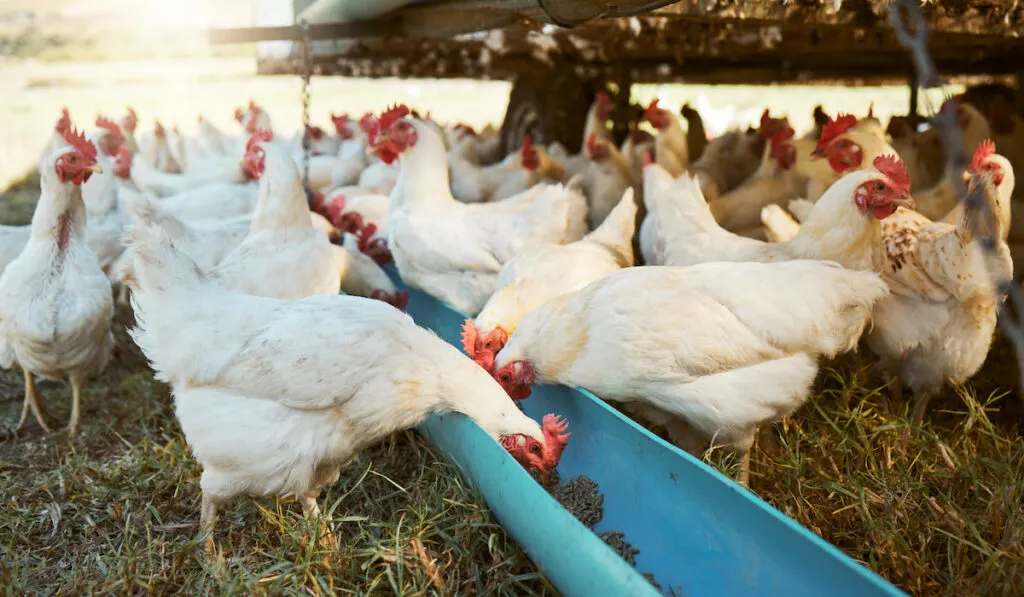
Table of Contents
Arkansas Weather and How It Affects Chickens
Throughout the year, the weather in Arkansas is not too harsh. The winters aren’t too cold, and the summers aren’t too hot.
January is usually the coldest month, with the average minimum temperature reaching about 29°F. This isn’t that low, and most chicken breeds don’t have a problem staying warm during the winter.
July and August are the warmest months, with the average maximum temperature reaching 92°F.
Keep in mind that the maximum temperature is the highest temperature recorded in a day – it won’t stay that high throughout the entire day. The maximum temperature is only that high for about an hour in the afternoon (sometimes not even that long).
On top of that, June and September aren’t as nearly as hot as July and August in Arkansas.
Now, 92°F is a high temperature, but this temperature on its own isn’t dangerous to chickens.
Temperatures just below 100°F are dangerous to poultry, research says.
The Arkansas’ summer average isn’t yet at that level, which means that birds will be uncomfortable during the hottest part of the day, but they’ll hide in the shade and eat less in order to cool down.
The real danger is high humidity! Chickens can’t cool down if humidity is over 50%, and the high temperatures affect them much more.
So, while a 92°F temperature on its own is manageable, accompanying it with more than 50% humidity can be fatal for chickens.
Humidity differs from one place to the other, but in Arkansas, humidity is usually at 50% or just around it during July and August afternoons.
To sum up – winters in Arkansas are very safe for chickens. Summers, however, are just on the line between safe and dangerous.
9 Best Egg Laying Chickens for Arkansas
1. Swedish Flower Hen
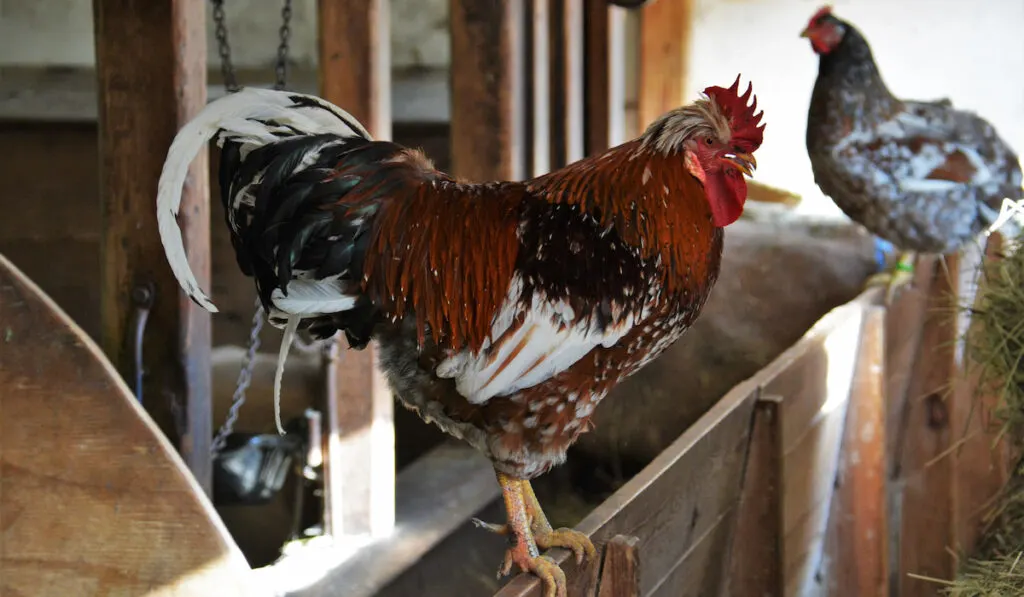
As the name suggests, this breed originated in Sweden, and it was very close to extinction before the Swedish government restored it in the wild. These birds are very easy to recognize because of their characteristic white spots.
While the feathers are mostly dark red or black, they have white tips, and this contrast is easy to spot. The head is usually white with a red comb.
Swedish flower hens can withstand very cold temperatures, given that temperatures in Sweden regularly drop below 30°F, especially during the winter.
Arkansas isn’t as nearly as cold as Sweden, so they won’t have trouble making it through the winter. Overheating also isn’t an issue for them, so the summers are also safe for them.
Throughout the year, a single hen will lay between 150 and 200 large, beige eggs, making them a great egg-laying choice.
2. Dorking Chicken
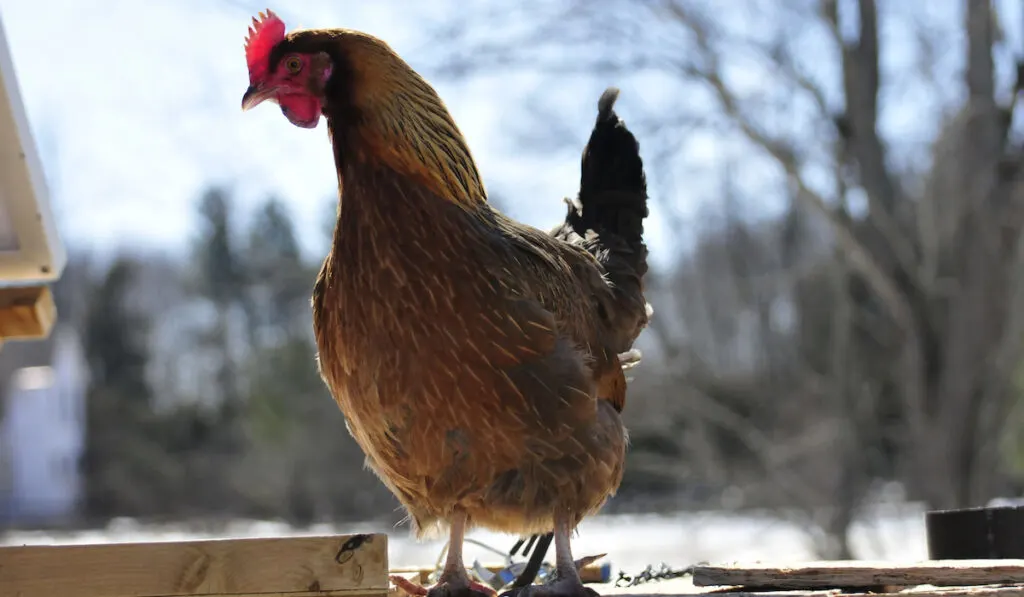
These chickens might be a bit difficult to get your hands on, but they’re great winter layers. In a year, they lay close to 200 eggs (which are medium to large in size), at least 40 of those in the winter.
Dorking chickens come from England, where they were first identified in the early 1800s. They have five toes, which is the easiest way to recognize them, as they can greatly vary in color.
There are white, silver-gray, red, dark, and cuckoo varieties of this breed.
Unlike most chicken breeds, they have a bit of trouble staying warm in the winter. Fortunately, Arkansas winters are milder than other states, so this shouldn’t be a problem, but an enclosed coop is important.
Since they’re naturally submissive, it’s best not to keep them in a coop with more aggressive breeds as they’ll slot in at the bottom of the pecking order.
3. Cochin Chicken
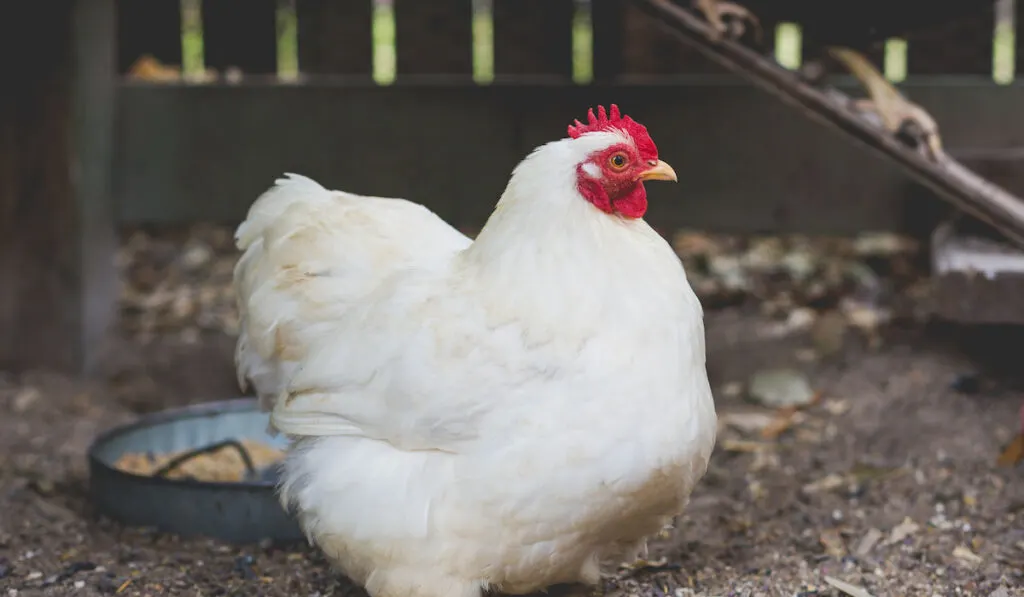
Another great winter-laying bird, the cochin chicken is known for being a large, completely feathered-up bird. You can’t even see its legs and feet because of the plumage!
This breed comes from China, where it was traditionally raised for eggs and meat (although the meat isn’t that good in comparison to other breeds).
In a year, cochins lay between 150 and 180 eggs, and they’ll continue laying eggs at the same rate in the winter if you feed them regularly and provide a good shelter.
Because of their thick plumage, they’re prone to overheating during the summer. It’s absolutely essential that their coop is well-ventilated!
Otherwise, you shouldn’t buy these chickens as they’ll overheat and potentially die during the summer.
4. Easter Egger
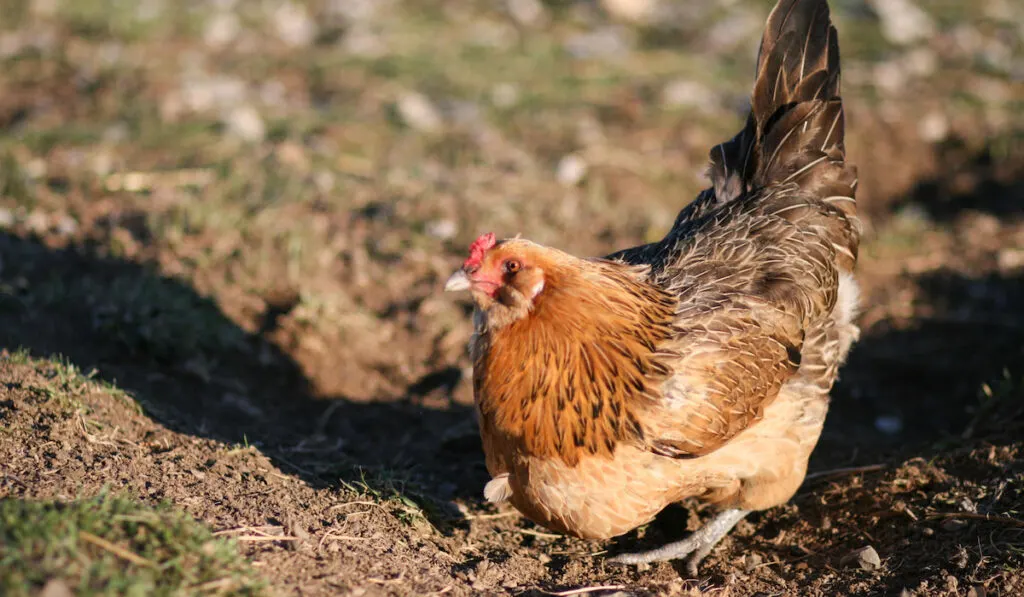
If you’re just starting out with chickens, the Easter egger is perhaps the best breed to start out with. They’re very low-maintenance and easy to care for!
Just like most chickens, they come in a variety of colors. What’s interesting about them is their egg color, which is also the source of their name – eggs can be blue, cream, pink, or brown.
They’ll lay between 200 and 280 large eggs a year, even during the winter, so just a few birds can ensure a year-long supply of fresh eggs.
Because of their small size and docile nature, they can be bullied by larger birds, which is why it’s best to keep them in a coop with other docile breeds.
5. Plymouth Rock
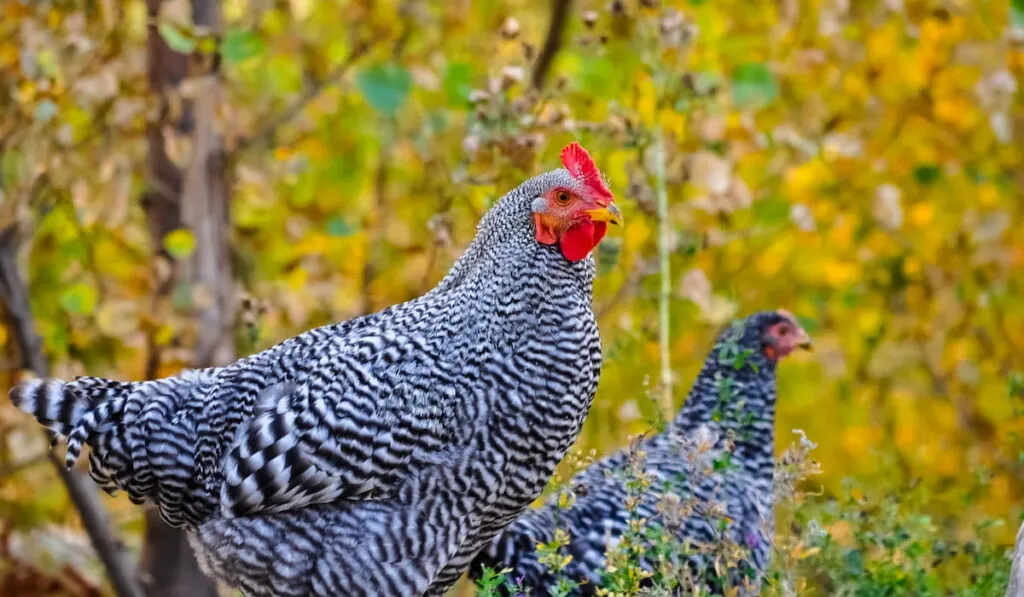
This breed, for example, can get along very well with Easter eggers because they’re also calm and docile. Plymouth Rock chickens come in a variety of colors, including white, blue, buff, silver, and Columbian.
These birds are very popular all across the United States, and if you talk to anyone who has chickens, they’ll most likely have at least one Plymouth rock chicken.
Plymouth rock chickens lay about 200 eggs a year.
They’re generally healthy but known to struggle with the temperatures during the summer because of their size.
Once again, good ventilation is key, otherwise the breed won’t survive.
6. Lakenvelder Chicken
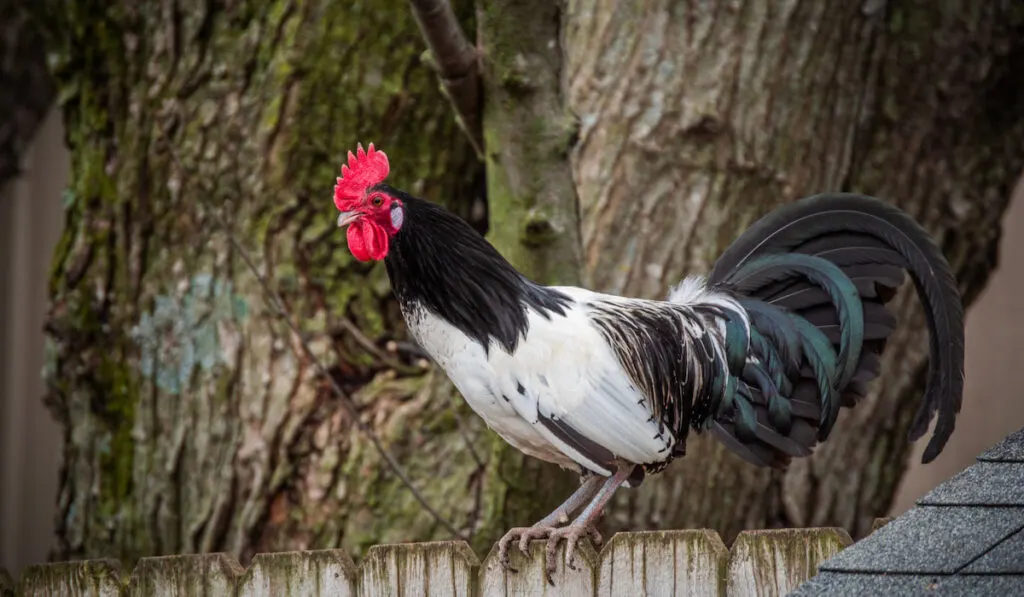
Originating either in Germany or the Netherlands (the history is still unclear), the Lakenvelder chicken is a beautiful bird that’s usually raised as a pet, not for laying eggs.
However, they can lay between 150 and 200 eggs a year, so you can get the best of both worlds with this bird.
This breed is very active, so they might not be a good fit with some of the other breeds on this list as they might end up bullying them.
They appreciate open areas they can explore and find earthworms in the soil. This can lead to trouble too, as they’re capable of jumping and flying over low fences, so you have to make sure that the area is fully enclosed.
When it comes to housing, Lakenvelders deal well with heat, but not so much with the cold. It’s important to completely close the coop in winter for them to stay warm.
They’re more of a spring breed than a winter breed.
7. Polish Chicken
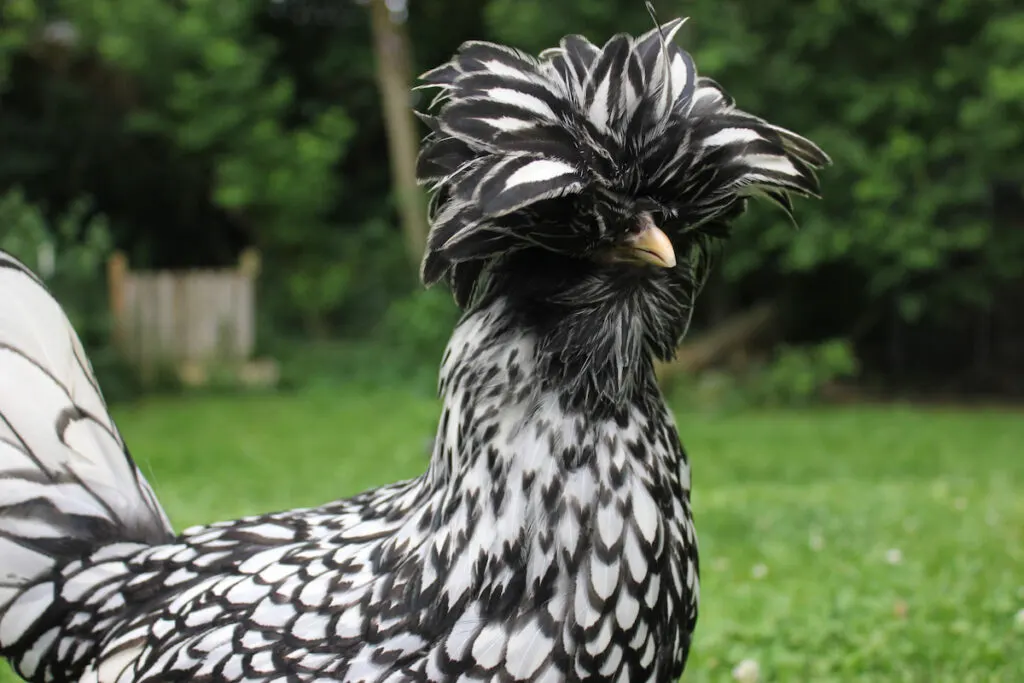
Laying about 200 eggs a year, the Polish chicken is a great addition to the coop. Just like Lakenvelders, they’re some of the most interesting chicken breeds in appearance.
You can easily recognize Polish chickens because of their comb – this happens because their feathers fall over their faces, giving them a peculiar look.
There are many different color varieties of this chicken, but they all have the same comb on their heads!
Polish chickens easily fit in with other chickens: They’re docile and won’t bully anyone, but they’re not a good choice if you have aggressive chickens in your coop.
These birds don’t do well in cold areas, which is ironic, given how cold Poland is. If the temperature of the coop drops below 32°F, they can freeze to death, so it’s important to insulate the coop.
They’re okay in the summer, though!
8. Hamburg Chicken
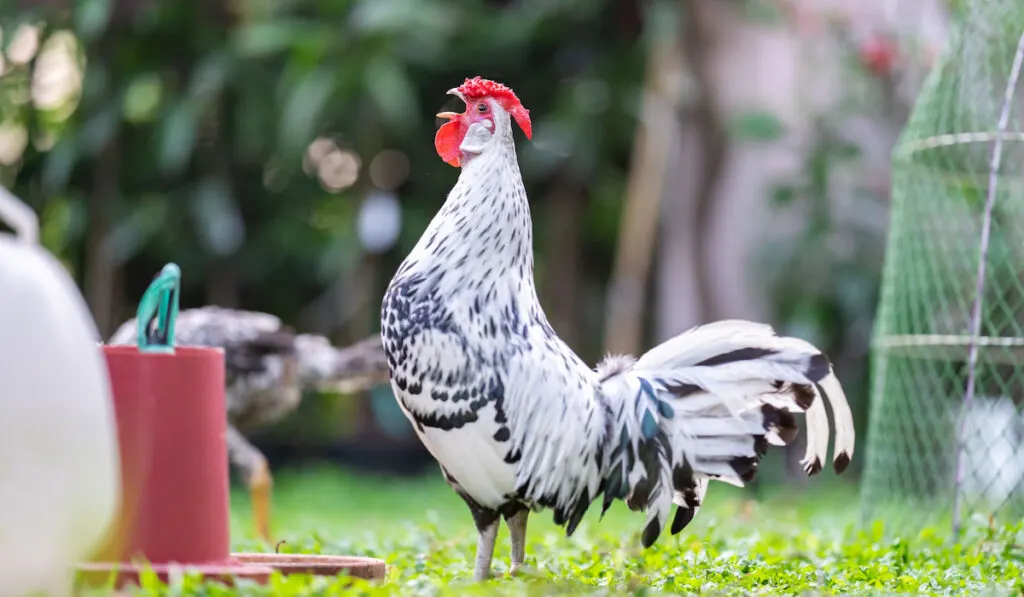
Capable of producing up to 250 eggs a year, the Hamburg chicken is a great addition to any coop.
However, they’re not very friendly to people and prefer to be left alone, so you shouldn’t choose this breed if you’re looking for a pet, as well as an egg layer.
They also don’t like other birds that much and it’d be best to keep them in an isolated coop.
There are about ten varieties of this chicken, but most of them are black and white with red rose combs. Visually, Hamburg roosters are some of the most stunning chickens.
Despite being hardy, they need a bit of help in the winter as they don’t retain heat well if the temperatures drop very low. This shouldn’t be a problem in Arkansas, though, as temperatures around 30°F are just fine for them.
9. New Hampshire Red
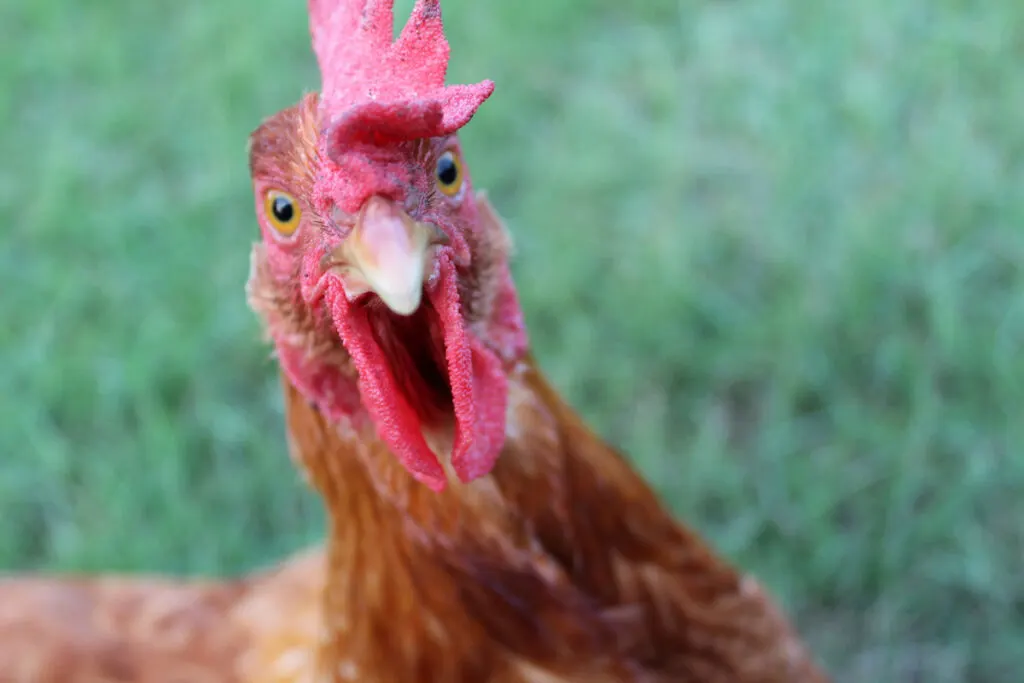
Finally, we have one of the youngest chicken breeds. Developed in the 20th century, the New Hampshire Red is an authentic American breed of chicken that lays about 220 eggs annually.
As the name suggests, they’re characteristically red, just like all other red chicken breeds. They’re also a very large chicken breed, weighing more than 6.5 pounds.
These birds do very well in both cold and warm weather, so you don’t have to worry about the temperatures very much, but their temperament is a bit odd.
They can be both docile and aggressive – which differs from one bird to the other. Some birds might have to be separated from the rest as a safety precaution.
Resources:
- https://www.nass.usda.gov/Statistics_by_State/Arkansas/Publications/Livestock_Releases/Chicken_Egg/2021/index.php.
- https://www.arkansas.com/arkansas-seasons/weather
- https://extension.umn.edu/poultry-care-and-management/preventing-heat-stress-poultry
- https://www.thehappychickencoop.com/swedish-flower-hen/
- https://livestockconservancy.org/heritage-breeds/heritage-breeds-list/dorking-chicken/
- https://livestockconservancy.org/heritage-breeds/heritage-breeds-list/new-hampshire-chicken/
- https://backyardpoultry.iamcountryside.com/chickens-101/swedish-flower-hen-breed-profile/
- https://www.thehappychickencoop.com/swedish-flower-hen/
